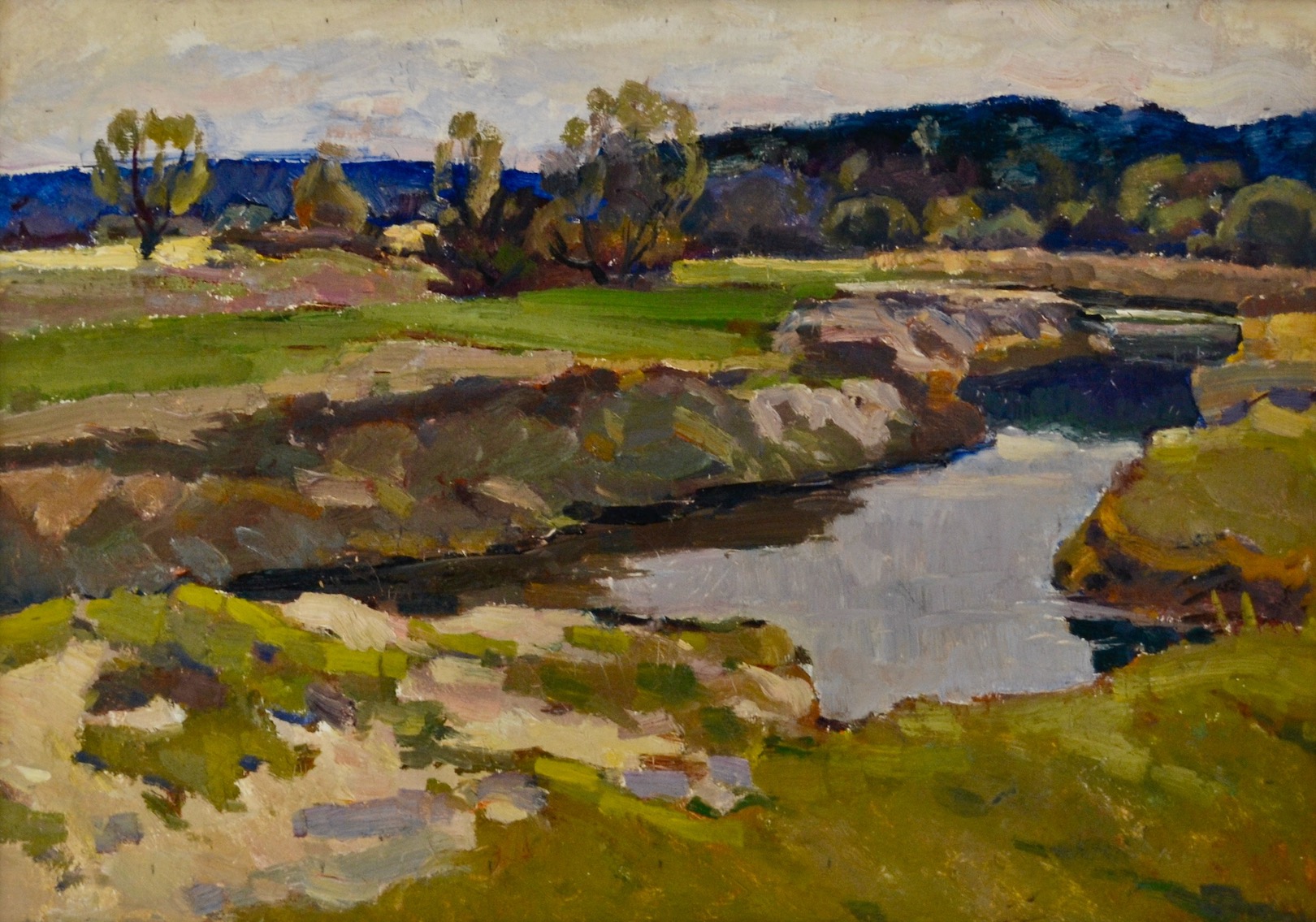Biography:
Curatorial Statement by Alison Hilton, Wright Family Professor of Art History, Emerita
Department of Art and Art History, Georgetown University
Nikolai Timkov’s vision of nature is both spacious and intense. The billowing clouds offer freedom from physical limitations; the trees glistening with hoarfrost delight the eye with the magic of light and color; and a few dark but glowing scenes of villages huddled in snow evoke a strong need for warmth and company.
Recognized as some of Russia’s most notable landscape painting, Timkov’s work should be seen in a larger context. It would be hard to name any artist working in the mid- to late 20th century who gave such constant, fertile, and profound attention to portraying familiar surroundings. Timkov’s paintings express his own identification with his homeland and at the same time welcome a viewer’s equally valid feelings about the landscape. Visitors to the exhibition will gain unexpected insights about nature – and about the processes of seeing and painting.
Timkov’s story embodies Russians’ sense of their land as refuge and sustenance. Born in a small village near Rostov-on-Don, in the south of Russia, in 1912, just five years before the Russian Revolution, Timkov began his art studies in Rostov, and then traveled to Moscow and Leningrad for advanced work at the Academy of Art. After graduating, he served in the Soviet Navy throughout World War II, and took part in the defense of Leningrad during the German bombardment and three-year blockade. His small studies of the besieged city, painted on small scraps of paper and cardboard, are among the first works in which Timkov displayed his attentive, yet lyrical treatment of his surroundings.
The beginning of Timkov’s career coincided with the establishment of Soviet Socialist Realism as the only authorized style of art. Prominent artists and writers joined political authorities in declaring that art and literature must depict the “reality of Revolutionary Russia.” Many artists turned to landscape painting as a way of avoiding overtly political subjects and glorification of Soviet leaders, while still celebrating a Russian identity. Unlike many of his peers, who adapted to the regulations by including appropriate, life-affirming genre motifs in their landscape paintings, Timkov concentrated firmly on the landscape itself. He kept his artistic integrity, perhaps at the expense of lost opportunities for advancement. Although he was admitted into the Union of Artists and participated in many exhibitions, he did not gain the prestige of colleagues who fulfilled the Party’s plans for monumental, representational art.
While his subjects are clearly Russian – most of his works inspired by the central Russian countryside of Tver Province, between Moscow and Leningrad, and by trips to the northern Ural Mountains and the Crimea – Timkov’s style also shares qualities of an international impressionist movement. Beginning in the 1870s in France, evolving in the 1880s and 1890s in Russia, the United States, and other countries, and continuing well into the 1960s, impressionism celebrated modernity, immediacy, and optical reality, and many works featured oblique angles, bold brush work, and intense color. The various national versions of impressionism were by no means repetitions or imitations of French impressionism, however. Russians who studied in Paris in the 19th century understood what the French were doing, but found the style too limited for what they deemed the obligation of the artist: to examine the human condition. But a few Russian painters, such as Vasily Polenov, Isaak Levitan, and Igor Grabar, did build upon the innovations of impressionism and tried to give the fleeting images of nature a distinctive resonance and depth, creating something universal out of the particular. Timkov, who greatly admired these artists, shared this dual conception of landscape.
Selected Collections:
- State Russian Museum, St. Petersburg
- St. Petersburg Museum of History, Russia
Selected Exhibitions:
- Solo Exhibition, Museum-Exhibition Center in St. Petersburg, Russia, 2018
- The Timkov Collection, Meridian International Center, 2008

